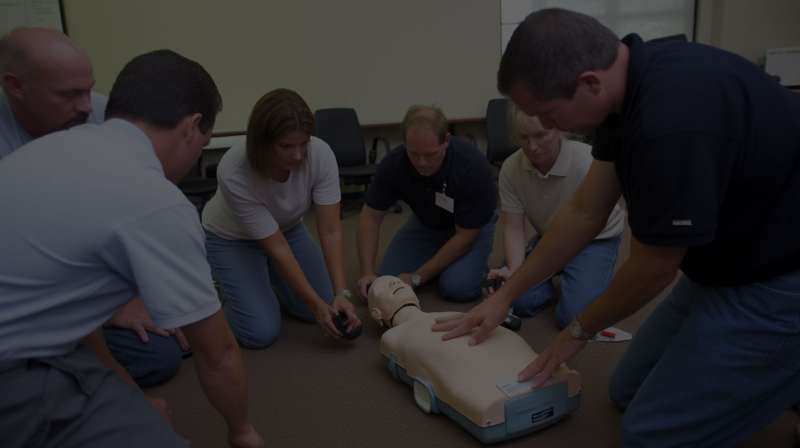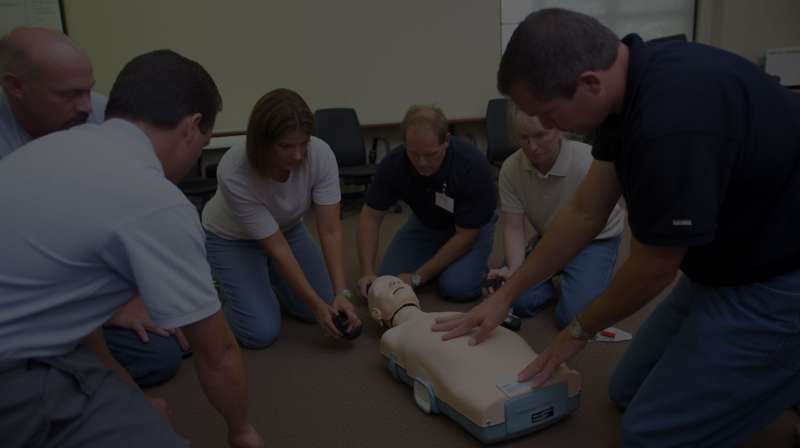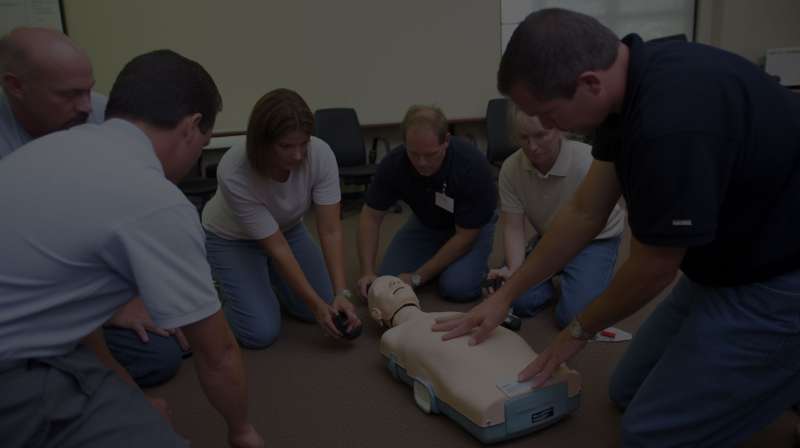In April 2011 the American Heart Association recommended new guidelines for cardiopulmonary resuscitation. The following advisory notes are produced in accordance with the American Heart Association, European Resuscitation Council, and the Australian Resuscitation Council, as part of ongoing research by ILCOR.
The new guidelines are based on extensive reviews of various studies, literature, debates, and discussions by prominent international resuscitation experts. They represent the most comprehensive research into emergency cardiac care to date but do not show a great change from 2005 guidelines and further reinforce emphasis on providing effective chest compressions with minimal interruptions.
One Rescuer Adult CPR Guidelines
CPR hand placement varies slightly when applied to adults, children, and infants, but the rate and ratio of chest compressions remain constant for all three circumstances.
Please note: CPR should not be performed on a person who does not need it!
- Activate the Emergency Medical Services using the appropriate phone number
- Having determined that the patient is not breathing and assuming that he/she is positioned on his/her back laying on a firm surface; begin CPR using the correct hand placement
- Find the compression sight or landmark by sliding two fingers along the bottom of the rib cage until they meet the bottom of the breast bone. Place two fingers on the lower end of the sternum and then place the heel of the other hand next to it in the middle of the chest. If you have a difficulty finding the correct hand placement, use an imaginary line drawn between the nipples
- Interlock your two hands and keep the arms straight with your shoulders directly above the center of the compression sight
- Provide 30 chest compressions, then open the airway and give two breaths. If you suspect possible drowning, begin with two rescue breaths before the chest compressions
- Compress adults chest to a depth of at least five centimeters (two inches) and giving compressions at a rate of at least 100 per minute
- To minimize interruptions in the chest compressions, if there is more than one rescuer present, continue CPR while the Automated External Defibrillator is switched on and the pads are being placed on the patient
- If you are unable or unwilling to give non-breathing patient rescue breaths, chest compressions alone are very beneficial to a patient without a heartbeat. If you provide continuous chest compressions you may still help to circulate some oxygenated blood




Share on social media